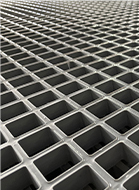loading...
- No. 9, Xingyuan South Street, Dongwaihuan Road, Zaoqiang County, Hengshui, Hebei, China
- admin@zjcomposites.com
- +86 15097380338
- Welcome to visit our website!
Exploring the Benefits and Applications of FRP Materials in Water Tank Construction and Design
The Advantages of FRP Material in Water Tank Construction
In recent years, the demand for efficient and durable water storage solutions has increased significantly due to urbanization and the growing need for water conservation. In this context, Fiber Reinforced Plastic (FRP) tanks have emerged as a preferred choice for both residential and industrial applications. This article explores the advantages of using FRP material in the construction of water tanks.
What is FRP?
Fiber Reinforced Plastic, commonly known as FRP, is a composite material that combines a polymer matrix with reinforcing fibers. These fibers, usually made from glass, carbon, or aramid, provide the structural strength and durability needed for various applications. FRP’s lightweight nature combined with its exceptional resistance to corrosion makes it an excellent choice for water tanks.
One of the primary advantages of FRP water tanks is their unparalleled resistance to corrosion. Traditional materials such as steel and concrete can deteriorate over time due to exposure to water, especially in harsh environments. In contrast, FRP is impervious to chemical reactions and environmental elements, ensuring that the integrity of the tank remains intact for many years. This characteristic makes FRP particularly advantageous for storing potable water and other liquids that might corrode traditional storage materials.
2. Lightweight and Easy to Install
FRP tanks are significantly lighter than their concrete or metal counterparts, which simplifies transportation and installation processes. The reduced weight means that less structural support is needed, allowing for greater flexibility in placement. Additionally, the installation process can be quicker and less labor-intensive, resulting in lower overall project costs. This lightweight property also makes maintenance easier, as handling and accessing the tanks is less cumbersome.
frp material water tank

3. Durability and Longevity
FRP material is designed to withstand a range of environmental conditions, including extreme temperatures and UV exposure. This durability ensures that FRP water tanks can have a lifespan of over 30 years with minimal maintenance. The longevity of these tanks translates into lower replacement costs and reduced resource consumption over time, making them an environmentally friendly choice.
4. Customization and Aesthetic Appeal
FRP water tanks are highly customizable. They can be manufactured in various shapes, sizes, and colors to fit specific requirements and preferences. This customization not only allows for greater functionality but also enables tanks to blend seamlessly into their surroundings. Whether for residential use, where aesthetics matter, or for commercial applications, FRP tanks offer design flexibility that other materials may lack.
5. Eco-Friendly Option
In an era of increasing environmental awareness, choosing FRP as a material for water tanks is an eco-friendly decision. The production of FRP involves less energy compared to traditional materials like concrete and steel. Moreover, the longevity and low maintenance needs of FRP tanks contribute to a reduced carbon footprint over their lifecycle. By choosing FRP, consumers contribute to sustainable practices that aim to preserve natural resources.
Conclusion
The growing popularity of FRP water tanks is a testament to their many advantages over traditional storage solutions. Their corrosion resistance, lightweight nature, durability, customization options, and environmental benefits make them an attractive choice for a wide range of applications. As communities continue to face challenges related to water scarcity and quality, incorporating advanced materials like FRP into water tank construction can help address these issues effectively. With their numerous benefits, FRP water tanks are indeed paving the way for a more sustainable future in water storage.
-
Premium FRP Handrail for All ApplicationsNewsAug.29,2025
-
Low Maintenance FRP Mini Mesh Grating ProductsNewsAug.29,2025
-
Innovative FRP Square Tubes for Modern Industrial SolutionsNewsAug.29,2025
-
FRP Water Storage Tanks Wholesale Solutions for Bulk BuyersNewsAug.29,2025
-
FRP Molded Grating Solutions for Diverse Industrial ApplicationsNewsAug.29,2025
-
Construction Advancements Through FRP Pultruded ProfilesNewsAug.29,2025
-
Why Choose FRP Railings, Guardrails, and Handrail Systems?NewsAug.29,2025
